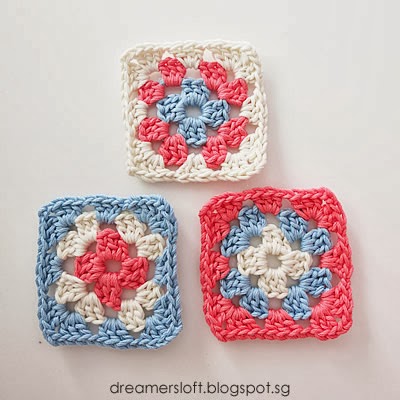After reading through the recipes and steps from Bake for Happy Kids, Peng's Kitchen and Qi Qi in the house, decided to adapt the recipe from Qi Qi in the house first. I guess partly coz I was attracted to the looks of the bao she made, very rustic looking with flower ink stamp :p
Followed Qi Qi's bao dough recipe and half her custard filling recipe. Started off with the custard filling first because it needed to be frozen to wrap neatly into the bao dough. Thereafter, waited about 1.5hrs before starting on the bao dough.
These are the chinese character 福, 發 pastry ink stamps which I bought from Shanghai Street in Hong Kong. The big one cost HKD59 and slightly bigger than 50 cent coin whereas the small one cost KHD49 and slightly bigger than 10 cent coin.
The custard filling was pretty straightforward to make. Basically steam the salted egg yolk for 7 mins, let cool and mash; cream sugar and butter together, then add custard powder, tapioca flour, corn flour, evaporated milk and the mashed yolk, blend well. After which, steam the mixture for 10 mins then blend again into a paste. The paste was very runny so I couldn't shape them at all. Just put it into a container and freeze for 2hrs.
The bao dough was easy as well. Just add all the ingredients together and knead till smooth, took about 10 mins. The dough would be very sticky at first, so it's recommended to add the liquid (milk) bit by bit instead of all at once. After proofing for 15 mins, dough was ready to use.
I managed to get 208g of dough which I divided into 8 portions of 26g each. As for the custard filling, 183g which I divided into 8 portions of 22g each. To make it easier, I used a disher or ice-cream scoop to scoop the custard filling. When rolling the dough, try to make the outer circle thinner leaving the inner circle thicker so that the skin wouldn't be too thin and burst during steaming. Thereafter, proof for another 30 mins and steam on high heat for 4 mins.
Tadah, the baos before steaming. I realised the Fu 福 is not as visible as the Fa 發. Probably I need more practice to make them look nicer. Managed to get only one that looked ok.
Really adored how the chinese characters look on the baos.
The steamed buns! Couldn't resist breaking one open immediately. The filling didn't really flow out like lava as expected, only partially. But I was happy and satisfied enough for this first attempt. One bite and I couldn't stop! Tasted really good, the bao was fluffy and salted egg yolk custard sweet and savoury. There was also a bit of sandy feel in the tongue due to the salted egg yolk. Ooooh, I love it!
Molten Salted Egg Yolk Custard Bun 流沙包
(recipe from Qi Qi in the house, reference from Bake for Happy Kids, Peng's Kitchen)
Custard Filling (183g)
Steps
- 3 Salted egg yolks
- 60g Unsalted butter, slightly softened
- 30g Caster sugar
- 15g Custard powder
- 5g Tapioca flour
- 3g Corn flour
- 25g Evaporated milk
Bao dough (208g)
- Steam salted egg yolk for 7 mins. After slightly cool down, mash finely and set aside.
- Cream butter and sugar till creamy, add custard powder, tapioca flour and corn flour, mix till blended.
- Scrap mixing bowl, add evaporated milk and mashed yolk, mix till well blended.
- Steam mixture for 10 mins. Remove from heat and let cool slightly.
- Blend into smooth paste, cool completely. Pour paste into container and freeze for 1.5-2hrs.
Steps
- 110g Hong Kong flour
- 1 tsp Baking powder
- 1 tsp Instant dry yeast
- 15g Caster sugar
- 75g Fresh milk
- 8g Vegetable shortening
Combine
- Add flour, baking powder, yeast and sugar into a mixing bowl and stir till well mixed.
- Add fresh milk little by little, stir using a spatula until rough dough forms (use about 3/4 of milk).
- Place the dough onto a floured surface and knead. When the dough doesn't feel too sticky, add the remaining milk little by little and continue kneading.
- Add shortening to dough and knead, making sure shortening is well blended into the dough, pressing down any lumps.
- Knead till dough is smooth, takes about 10-15 mins in total.
- Shape dough into a ball, tucking in ends at the bottom. Place in large bowl, clingwrap and proof for 15 mins.
- After 15 mins, knead dough for a few secs, divide dough into 8 portions of 26g each.
- Roll each portion of dough into ball, then flatten using rolling pin or palm of hand.Try to roll the outer circle thinner, leaving inner circle thicker.
- Scoop a ball of frozen custard filling (22g each), place it onto the centre of the dough, then wrap up and pitch dough to ensure proper closing.
- Place on grease proof paper.
- Brush red/pink colouring onto chinese pastry ink stamp and gently stamp onto the middle of the bun.
- After completing all 8 buns, cover with clingwrap and proof for 30 mins.
- About 5 mins before buns are ready from proofing, heat up water in steamer on high heat.
- Once buns are ready, place into steamer and steam on high heat for 4 mins.
- Best serve warm.
I definitely need more practise to get the perfect lava flow custard filling, but not so soon since this is pretty sinful. Stay tuned!
I am submitting this post to Asian Food Fest ( Hong Kong + Macau ) – Jan+Feb Month hosted by Annie of Annielicious Food










































